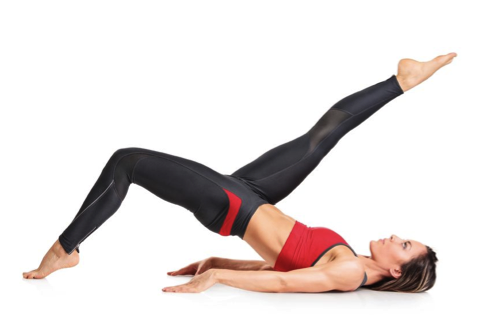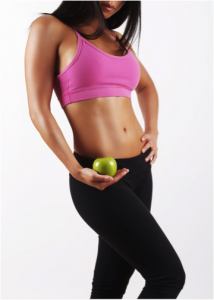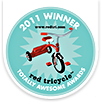 After my post on 5 Steps to Flat Abs a few days ago, I’ve had some questions about appropriate ab exercises. I asked one of my colleagues, Sylvia Favela, a Pilates expert, to take the reigns on this. I know plenty of great core exercises, but Pilates is truly an excellent way to strengthen your core and re-shape your mid section after pregnancy. Sylvia is going to tell you exactly how and why Pilates works. Pilates can be a great compliment to any of our FHM programs, especially if you have been struggling with core strength or Diastasis Recti.
After my post on 5 Steps to Flat Abs a few days ago, I’ve had some questions about appropriate ab exercises. I asked one of my colleagues, Sylvia Favela, a Pilates expert, to take the reigns on this. I know plenty of great core exercises, but Pilates is truly an excellent way to strengthen your core and re-shape your mid section after pregnancy. Sylvia is going to tell you exactly how and why Pilates works. Pilates can be a great compliment to any of our FHM programs, especially if you have been struggling with core strength or Diastasis Recti.
Take is away Sylvia . . .
When Pilates first became widely popular it was common to hear that it was just a trend and the workout wouldn’t last.
What is Pilates? That’s a common question I hear all the time and when I hear what people say about it without ever trying it is so far off the radar of what it really is.
It’s been misinterpreted as being just a “stretching” exercise. I’ll be the first to tell you, yes – Pilates does require flexibility and some of the movements do require stretching but it goes far beyond that.
Another common misconception about Pilates is that it’s only for celebrities or dancers and you have to be flexible to do it. Again none of that is true either.
We’ve heard so much about Pilates, well at least in movies and reality shows. All the popular celebrities are doing it and what is the result?
A Slim, Toned, Lean, Fit physique…
So, I’ve outlined a few of the misunderstandings about Pilates… And answer some of the commonly asked questions about Pilates….
Q: Does Pilates only work your core or can you use it to work your whole body?
A: Pilates main focus is the core. Without engaging the core it’s impossible to complete a Pilates exercise. Pilates works the entire body as a whole. What I mean by that is when you doing a particular Pilates Booty exercise you have to work the core, the legs, and your torso. Pilates requires full body engagement, unlike other exercises when you are lifting a dumbbell to target s specific area without engaging other muscle groups.
What this means is your entire body is working as you are on the floor doing an Ab exercise, you are working your inner thighs, glutes, shoulders.
Bottom line, yes, it’s a full body exercise.
Q: How and why are Pilates exercises more effective than traditional ab exercises like crunches and sit-ups?
A: I get this question everyday… I can go on for days about this but I will try to keep it short and not go off on rant.
If I were to ask you how many crunches and sit-ups does it would take to start feeling a burn? 20, 30 maybe even 100? The main reason why it’s required to do so many repetitions of these traditional exercises is improper form and lack of deep abdominal muscle engagement.
Even more, these traditional moves puts an extreme amount of strain on the back of the neck and hip flexors, this is not necessary to achieve core strengthen. Crunches and sit ups teach you to push your muscles outwards rather than pull them in.
When I see people doing these traditional moves I see bodies being thrown around with no control of what’s happening. I see heads being yanked down to the chest and hips thrusting up. It’s painful for me to watch because I know what the long-term result of that is…Neck pain, tight low back, tight hip flexors and lots of wasted time doing hundreds of these moves.
These traditional moves target the superficial layer of the abdominals, for example your 6-pack muscles, the rectus abdominal. Imagine for a minute two rubber bands side by side, when your pregnant the two rubber bands start to separate to make room for the baby’s growth.
After having a baby it takes time for the rectus to come back together. And with traditional exercises the movement requires you to thrust your ribs in and out and not draw your belly in. What’s the result? The rectus not aligning itself back together and resulting in a gap between it.
After having my son I suffered from Rectus Separation (Diastasis recti abdominis or DRA) and a slipped disc – but that’s another story. When the rectus was separated I focused on deep Pilates ab movements.
Pilates exercises works the Deep Transverse Abdominals, this is the deepest layer of the abdominals…these muscles generally run from your bellybutton down to your pubic bone. The TA muscles are typically forgotten about when doing traditional ab exercises.
Apart from engaging the TA muscles, engagement of the pelvis is necessary to keep an equal balance of the pelvis and on the torso to allow the body to distribute the weight equally throughout the body.
Traditional sit ups and crunches results in a square like midsection, primarily because the ribs are constantly flaring out and there is no real control of the abdominal muscles.
 With Pilates the rib cage must be drawn in and working at all times resulting in a feminine hourglass physique.
With Pilates the rib cage must be drawn in and working at all times resulting in a feminine hourglass physique.
When doing Pilates ab exercises it takes control and your abs are on fire by repetition number 3. It doesn’t take hundreds of reps with Pilates.
As a mom I don’t have hours and hours to workout so wouldn’t it make sense to do a Pilates ab exercise that’s ineffective or requires hours of working out.
Q: Will Pilates give me a flat belly and is it a good workout for moms?
A: Most definitely…Yes and Yes…
One of the little symptoms I don’t miss when I was pregnant was when I would pee on myself when I sneezed or laughed really hard. After a while I just thought it was funny because it kept happening to me up until I delivered my son.
Pilates is especially good for moms and here’s why…after pregnancy the body has undergone a traumatic event. The pelvis has shifted and the body’s alignment is compromised. The pelvic floor muscles are weak and need to be strengthened during pregnancy and directly after birth.
Working the pelvic floor muscles is extremely important for every single woman out there. Especially mom. The pelvic floor stretches tremendously during pregnancy and afterward it feels as though everything is jiggle in there – and disconnected. This goes for both natural and C-section deliveries. Pilates exercises forces the engagement of the pelvic floor and helps to realign the pelvis and help with the healing process.
Your doctor probably told you time and time again to do kegel exercises! Pilates is all about kegel exercises.
Pilates moves helps to flatten the belly mainly because you are constantly drawing the abdominals in not out, you are targeting the transverse abdominals (the baby pooch) and there’s no cheating. If you’ve done 5 reps of a Pilates ab exercise and you’re not feeling like your abs are on fire, chances are you aren’t drawing in deep enough with your abdominals.
My son is now 9 years old and I can honestly say that doing Pilates everyday has helped me and continues to help me. As a trainer, I see Pilates keep my clients connected with their bodies and stay strong from the inside out.
Like I said, I can easily go off on a rant for days on why Pilates is so very important for moms. Even if you incorporate it to a fitness routine you are already doing you will be amazed with the results and the benefits. You don’t need expensive equipment. Put yourself on the floor and practice doing a few moves…
I put together this little video of a great Pilates Ab Series for Fit Healthy Moms. Give it a try!
Ok, Sara back here. Thanks for the info Sylvia! I hope you all watched the above video carefully. While some pilates moves can look like traditional ab moves (like crunches), they are much more challenging. You know I do not recommend crunches and neither does Sylvia. If you are going to incorporate Pilates moves into your routine, you must be sure you’re using proper form. Sylvia has an entire program that will guide you through many Pilates moves. You can check out her program here. You can also contact her at www.360PilatesWorkout.com if you have any questions or want to learn more about Pilates.
If you’ve used Pilates in your exercise routine before, let us know in the comments below. We’d love to know what your experience with Pilates has been.
Comments
Powered by Facebook Comments

